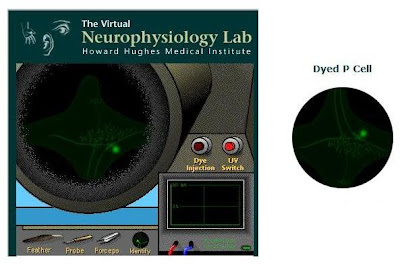1. What is the electrode measuring?Electrodes record the activity of neurons. A neuron is a cell that handles information to and from the central nervous system to parts of the body. This communication is done using electricity and electrodes measure the electrical current.
2. Why use leeches in neurophysiology experiments?Leeches have 175 pairs of neurons that are fairly large which have made them very popular for neurophysiology.
3. What is the difference between a sensory and a motor neuron?Nerve impulses or messages travel from a sensory receptor to the central nervous system by means of a sensory neuron. While motor neurons take nerve impulses away from the central nervous system to a muscle fiber of gland.
4. Do you think a leech experiences pain? What is pain?Pain is a way of our body letting us know about possible danger. Without pain receptors we might not know we are being burned by something until we smelt burning flesh or saw the damage that was being done which by them might be too late. I think that leeches can sense hurt but not in the way humans do. I think when they encounter something that causes pain they react by pulling away but later if they encounter the same thing they would not feel the pain from before and stay clear of the object.
5. What were the two most interesting things about doing this lab?The most interesting things about this lab were seeing how different neurons are effected by different stimuli and that leeches were the favorite subjects of neurobiologists. I have never really thought much about neurons or knew that they looked and acted in different ways.
6. Anything you found confusing or didn't like about the lab?
The only thing I found confusing was determining which pictures were required for this Lab. Everything else went fairly smoothly and demonstrated neuron activity very well.


Work Cited:
http://www.hhmi.org/biointeractive/vlabs/neurophysiology/index2.html

No comments:
Post a Comment